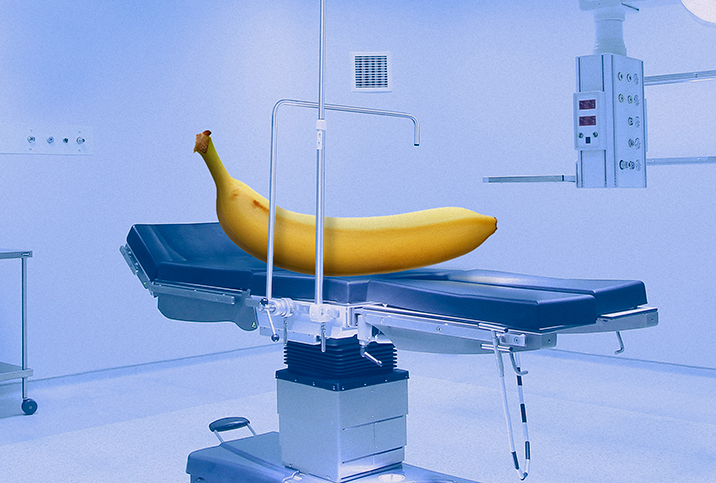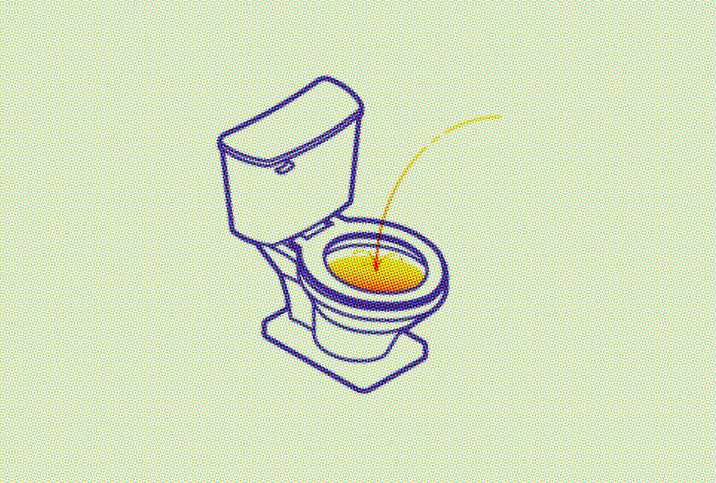Serious Scar Tissue in a Sensitive Area Might Call for a Urethroplasty

Getting kicked in the groin during a soccer match.
Attempting to climb a fence and failing, painfully.
Falling from a bicycle seat and landing on the crossbar.
Injuries like these, which make men grit their teeth and wince, are the most common cause of urethral stricture, according to Charles R. Powell, M.D., an associate professor of urology at Indiana University School of Medicine in Indianapolis.
Urethral stricture is the narrowing of the urethra, generally caused by an accumulation of scar tissue, most often the result of trauma.
"It's something that gradually happens, and a man may not notice anything is going on, and then eventually, he'll notice," said Powell, who specializes in urethroplasty, a type of open surgery that involves the reconstruction or replacement of the urethra, the tube that carries urine through the penis. "I usually don't see a patient in the clinic until he's in bad shape."
Another cause of urethral stricture, which is more common in younger men, is inflammation from sexually transmitted infections (STIs), such as gonorrhea and chlamydia. A less common cause is damage from surgical tools inserted into the urethra for procedures. However, Powell pointed out that the exact cause of the stricture is often unknown.
Symptoms of urethral stricture
Common symptoms of urethral stricture include a slow urine stream, pain during urination and straining to urinate. If a man has a severe urethral stricture, eventually he'll need to seek medical attention because of excruciating pain.
"What happens is you can't empty your bladder," Powell said. "Anyone who's been through that knows exactly what I'm talking about. If you haven't been through it, it's pretty hard to understand how painful that is. They are going to walk to the emergency room if they don't have any other choice."
For relief, urologists put a small camera and then a small wire into the urethra. Along the wire, they gradually place wider and wider tubes that can stretch open the urethra. However, this method, known as dilation, is not a permanent fix. Another procedure for urethral stricture is urethrotomy, which involves cutting the scar tissue and widening the urethra. The most effective option by far is urethroplasty, though it's also the most invasive.
Diagnosis of urethral stricture
To diagnose urethral stricture, urologists typically try one of two methods, according to Nicolas Ortiz, M.D., a urologist at UVA Health System in Charlottesville, Virginia, who specializes in urethroplasty. Doctors use a special type of X-ray called a retrograde urethrogram (RUG), which involves injecting dye into the urethra, allowing them to see with the X-ray if there is any narrowing and the location and extent of the problem. The other method is a cystoscopy, in which a thin tube with a small camera on the end is inserted into the urethra.
Ortiz said urethroplasty falls into two main categories: removing all scar tissue and then putting the healthy ends of the urethra back together, or augmentation through the use of a graft, usually taken from the lining of the cheek inside the mouth, to make the diameter of the urethra wider.
Potential complications and common questions
While complications from urethroplasty are rare, they include infection and the development of an abscess, or accumulation of pus, in the area.
Men can develop a fistula if the urethra doesn't heal properly, leaving a hole where the repair was done that drains out to the skin.
"So when you urinate, some of the urine comes out the tip of the penis like it's supposed to and some comes out of the hole that's either underneath the scrotum or along the shaft of the penis," Powell said. "That's a pretty rare complication, but that's certainly something we all worry about."
One of the main concerns men have regarding urethroplasty is whether the urethral stricture will return.
"A lot of patients may have had several dilations in the past, so they want to know that this procedure is going to be less likely to produce a return of the stricture," Ortiz said. "The reality is that urethroplasty has about an 80 to 90 percent success rate, depending on the type of urethroplasty, the length of the stricture and the location."
For comparison, Powell said the success rate for dilation is only about 20 percent.
'The reality is that urethroplasty has about an 80 to 90 percent success rate, depending on the type of urethroplasty, the length of the stricture and the location.'
"One way a man can increase his success rate is by putting a catheter in his penis once a week," Powell said. "We call that self-calibration. Nobody wants to do it—it's painful. You don't have to do that if you do the urethroplasty, typically."
However, men must wear a catheter for two to four weeks following urethroplasty while the urethra heals.
Another common question patients have, according to Powell: "Is this going to change my erection?" Depending on where the scar tissue is, it could.
"If it's really deep or really close to the prostate, there is a chance it's going to affect the man's erections after surgery. We don't have a choice. If the scar tissue is in that area, we've got to take it out. We try to do things to minimize the likelihood they're going to have a loss of function," Powell said, adding that it's uncommon for men to experience erectile dysfunction (ED) following urethroplasty.
Recovery and prevention
Recovery from urethroplasty—the procedure generally takes two to five hours—is usually tolerable.
"Pain is reasonable but well controlled with medications," Ortiz said. "Very few end up needing narcotics after the procedure. They usually can be active and move around starting the first day. They can usually shower the next day."
A few weeks after surgery, patients typically return to the medical office, where a special X-ray is again used to ensure the urethra has healed. If it has, the catheter comes out, Ortiz said.
Prevention of urethral stricture can be difficult because the cause is often traumatic. Wearing a protective cup during contact sports and avoiding STIs by practicing safe sex are two steps patients can take.
Sometimes, Ortiz sees older men who have been dealing with urethral stricture for many years.
"They've been seeing urologists who do a dilation, and then they do another dilation and another dilation every so often," he said. "I generally do not recommend for patients to undergo more than one dilation. If one dilation doesn't work, I think they should proceed with reconstruction. Unfortunately, not every urologist is trained in urethroplasty, so they may offer more dilations rather than refer the patient to a specialist."
If you're experiencing symptoms of urethral stricture, ask your doctor about treatment options and whether you need to see a specialist, because you want the best possible care for such a sensitive and important area of your body.

















